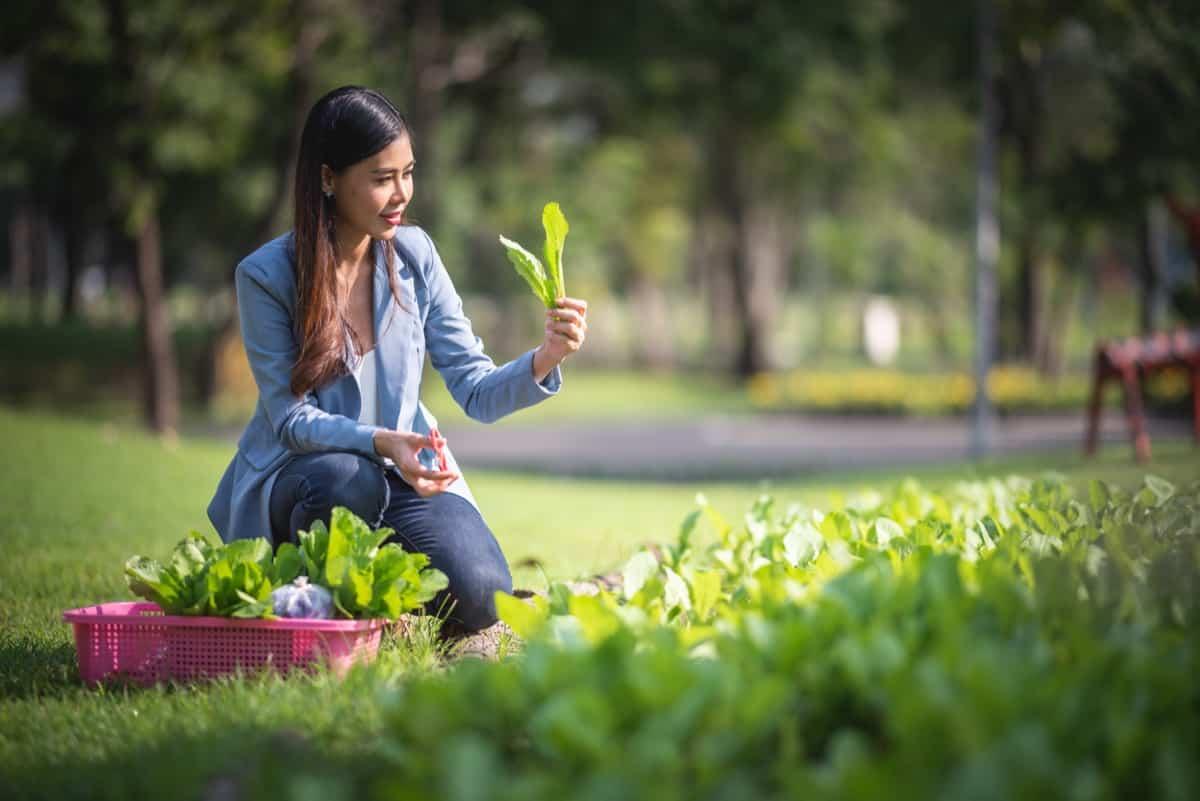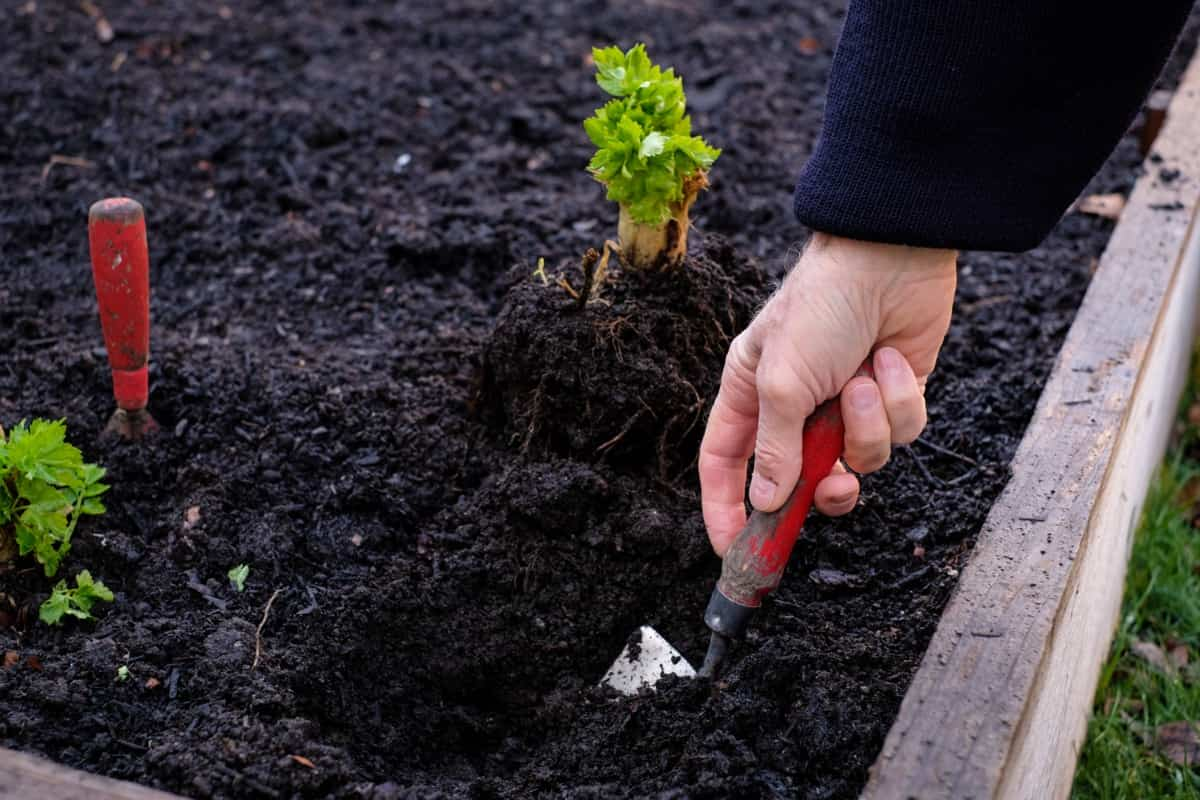With its vast landscapes and unique climate, Wyoming poses certain challenges and opportunities for gardening enthusiasts. The question, “When should I plant my garden in Wyoming?” is common among newcomers and even long-time residents. With varying temperatures, Wyoming’s growing season can be unpredictable.

To make the most of it, gardeners need to know the best month for planting vegetables and clearly understand how to grow vegetables in Wyoming. While the Wyoming growing season can be brief compared to other states, several vegetables thrive in its conditions. To help guide your gardening journey, this article will delve into gardening in Wyoming, distinguishing between the eastern and western regions and highlighting the Wyoming growing zone specifics for areas like Cody and Casper.
When to Plant Vegetables in Wyoming
Understanding Wyoming’s Climate Zones
Wyoming is primarily divided into two distinct climate zones, with the eastern region experiencing slightly more rainfall than the western side. This division impacts the choice of vegetables and their planting schedule. Cody and Casper are situated in the USDA Hardiness Zone 4b, meaning they experience colder winters. Recognizing the Wyoming growing zone for your specific location can be the key to successful vegetable growth.
Factors Affecting Vegetable Planting Dates in Wyoming
While climate zones provide a general idea, other factors influence when to plant. Soil temperature, frost dates, and day length can all impact vegetable growth. Additionally, the altitude varies across the state, affecting temperature and, in turn, planting decisions. The last frost dates in spring and the first frost dates in fall are crucial to determining the Wyoming growing season length, guiding gardeners on when to sow and harvest.
Planting Vegetables in Eastern Wyoming
With its slightly more temperate conditions, the eastern part of Wyoming offers a good window for various vegetables. Gardeners can start with cool-season veggies like lettuce, peas, and radishes as early as April, depending on the last frost dates. By late May and early June, when the soil has warmed up sufficiently, tomatoes, bell peppers, and zucchini can be introduced.
Optimal Vegetable Planting Times for Western Wyoming
Western Wyoming, with less rainfall and a slightly shorter growing season, demands a strategic approach. Gardeners should opt for vegetables like spinach, broccoli, and cauliflower in early to mid-April. Come late May or early June, when the risk of frost diminishes, you can plant warm-season vegetables like beans, cucumbers, and pumpkins. The key is to monitor soil temperatures and weather forecasts closely.
In case you missed it: Best Wyoming Container Plants: For Vegetables, Flowers, Herbs in Winter, Shade, Full Sun

Vegetable Planting Schedule for Wyoming
- Early Spring (April): Lettuce, peas, radishes, spinach, broccoli, cauliflower.
- Late Spring (Early June): Tomatoes, bell peppers, zucchini, beans, cucumbers, pumpkins.
Recommended Vegetables for Early Spring Planting in Wyoming
Early spring in Wyoming is a time when cool-season vegetables thrive. Lettuce, with its quick growth, can be harvested within weeks. Peas, which prefer the cooler temperatures of early spring, can be sown as soon as the soil can be worked. Radishes, another rapid grower, can provide a crunchy harvest within a month. Spinach, a nutrient-packed leafy green, can also be introduced during this time, along with broccoli and cauliflower, which can tolerate light frosts.
Late Spring and Early Summer Vegetable Planting Guide for Wyoming
As the warmth of late spring and early summer approaches, Wyoming gardens can accommodate a wider variety of vegetables. Tomatoes, a favorite among many, require warmer soil temperatures and should be planted post-the last frost date. Bell peppers, needing similar conditions as tomatoes, can be sown alongside. Zucchini, a versatile vegetable, can be introduced during this time. Beans and cucumbers requiring warm soil can be sown in late spring, ensuring a bountiful summer harvest. Lastly, pumpkins, a symbol of fall, can be planted now to ensure they mature by October.
Fall Vegetable Planting Tips for Eastern Wyoming
In Eastern Wyoming, as temperatures drop, your garden can still thrive with the right choices. Fall presents a perfect opportunity to plant cool-season vegetables that can tolerate or enjoy the cooler weather. Start by preparing the soil, removing leftover summer crops, and adding compost for nutrient enrichment.
In case you missed it: When to Plant Vegetables in Pennsylvania: Growing Calendar For Eastern and Western Regions

Consider crops like kale, turnips, and Brussels sprouts, which can tolerate light frosts and taste sweeter after a cold snap. Beets, carrots, and radishes can also be sown, offering a fresh harvest even in the cooler months. To ensure growth, keep an eye on the frost dates, and consider using frost covers or cloches to protect against unexpected cold snaps.
Ideal Fall Planting Dates for Western Wyoming
Western Wyoming’s fall can be a tad more unpredictable, requiring gardeners to be even more vigilant with their planting schedules. To make the most of the growing season, consider sowing in late summer, usually around late August to early September. Focus on fast-maturing crops like arugula, spinach, and mustard greens, which can provide a harvest before the severe frosts set in.
Root vegetables such as turnips and radishes can also be a good choice. As with Eastern Wyoming, monitoring the forecast for frost is crucial. Employing raised beds or mulching can help maintain soil warmth and extend the growing season slightly.
When to Plant and What Vegetables to Grow in Wyoming in Winter
While winter in Wyoming can be harsh, it doesn’t mean that gardening has to halt. Consider setting up cold frames or greenhouses for those eager to have year-round produce. Cold-hardy vegetables like kale, collards, and winter lettuce can thrive within these controlled environments.
Starting in late fall, you can plant garlic and shallots, establishing roots and burst into growth come spring. Consider indoor herb gardens if you’re looking for an even simpler winter gardening task. Plants like basil, rosemary, and thyme can provide fresh flavors when grown on sunny windowsills throughout the cold months.
Vegetable Planting Schedule/Calendar Table for Wyoming
| Month | Vegetables to Plant |
| January | Consider indoor herbs |
| February | Start seeds indoors for veggies like tomatoes and peppers. |
| March | Begin cool-season veggies like peas, spinach, and lettuce indoors. |
| April | Transplant cool-season veggies outdoors; sow radishes, broccoli, and cauliflower directly |
| May | Plant warm-season veggies like tomatoes, bell peppers, zucchini, beans, and cucumbers |
| June | Continue with warm-season veggies; start carrots, beets, and summer squashes. |
| July | Plant fall-harvested veggies like Brussels sprouts and cabbages; continue with carrots and beets |
| August | Plant quick-growing cool-season veggies like spinach and arugula for a fall harvest; start planting garlic for next year |
| September | Continue planting spinach, mustard greens, and radishes; protect plants from early frosts. |
| October | Plant overwintering veggies in greenhouses or cold frames; protect remaining crops from frost |
| November | Focus on winter-hardy veggies in cold frames or greenhouses; mulch beds for winter. |
| December | Plan for the next year; consider indoor herbs. |
In case you missed it: Fertilizing Potted Oregano Plants: Organic, Natural, Homemade, NPK Ratio, When and How to Apply

Conclusion
With its distinct seasonal changes, Wyoming’s diverse climate offers many opportunities for gardeners. From the fall harvests of Eastern Wyoming to the winter greens in cold frames, with a bit of planning, knowledge, and care, it’s possible to have a flourishing garden throughout the year.
- Feed Your Flock for Less: Top 10 Tips to Save on Chicken Feed
- Ultimate Guide to Ossabaw Island Hog: Breeding, Raising, Diet, and Care
- Hatching Answers: The Top 10 Reasons Your Chickens Aren’t Laying Eggs
- Eggs and Economics: Breaking Down the Cost of Raising Backyard Chickens
- Defend Your Greens: Proven Methods to Keep Iguanas Out of Your Garden
- Ultimate Guide to Cinnamon Queen Chicken: A Comprehensive Guide for Beginners
- Ultimate Guide to California Tan Chicken: Breeding, Raising, Diet, Egg-Production and Care
- Ultimate Guide to Marsh Daisy Chicken: Breeding, Raising, Diet, and Care
- 10 Types of Chicken Farming Businesses You Can Start for Profits